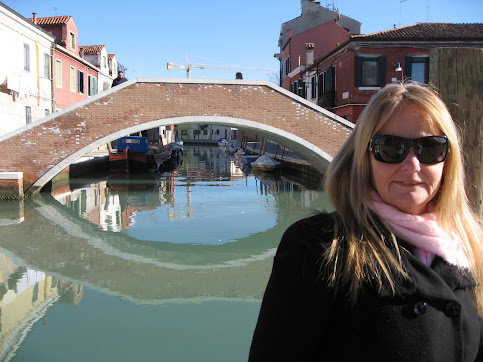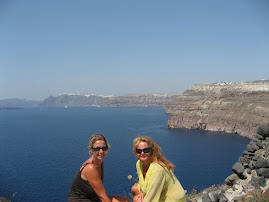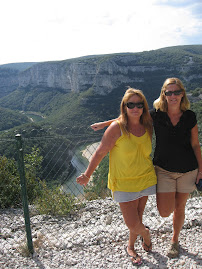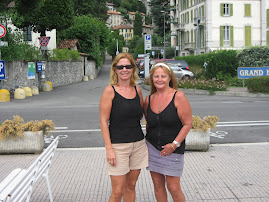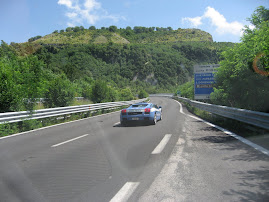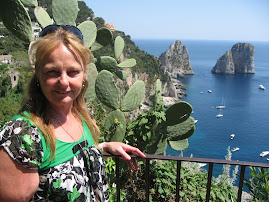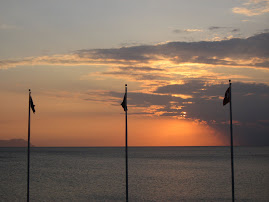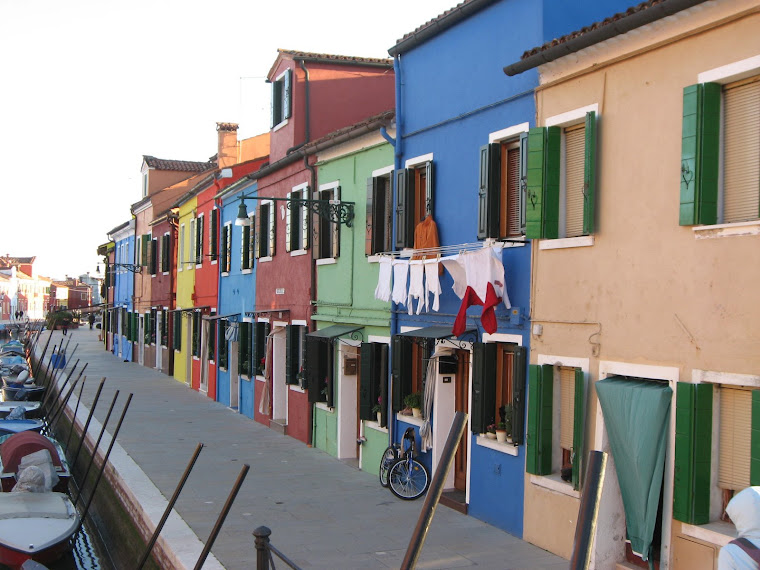 Me in front of the Theatre of Pergamon, one of the steepest theaters in the world, has a capacity of 10,000 people and was constructed in the 3rd century B.C. The theater underwent changes during the Roman period under the reign of Caracalla. There is a 246.5 m long and approximately 16 m wide stoa (portico) in front of the theater. The road in front of the theater leads to the Temple of Dionysos (known in Rome as Baccus, god of wine). The temple was constructed in the 2nd century B.C. and reconstructed in marble during Caracalla's period (211-217 AD). Its dimensions are 11.80 x 20.22 m. The temple has a very high staircase in front with a height of 4.5 m and 25 steps and from the top the view was amazing.. another steep climb!
Me in front of the Theatre of Pergamon, one of the steepest theaters in the world, has a capacity of 10,000 people and was constructed in the 3rd century B.C. The theater underwent changes during the Roman period under the reign of Caracalla. There is a 246.5 m long and approximately 16 m wide stoa (portico) in front of the theater. The road in front of the theater leads to the Temple of Dionysos (known in Rome as Baccus, god of wine). The temple was constructed in the 2nd century B.C. and reconstructed in marble during Caracalla's period (211-217 AD). Its dimensions are 11.80 x 20.22 m. The temple has a very high staircase in front with a height of 4.5 m and 25 steps and from the top the view was amazing.. another steep climb! The famous Altar of Zeus in Pergamon is on the south of the theatre. Eumenes II (197-159 BC) constructed it as a memorial of the victory against the Galatians. This Altar has the shape of a horseshoe and its dimensions are 36.44 x 34.20 m. It is composed of four parts and the high relieves on it describe the war between the giants and the gods. The Altar which was taken away from Pergamon in 1871 and carried to Germany by the German engineer Carl Humann, is exhibited at the Museum of Pergamum in Berlin, in a manner conforming to its original. The Turkish government is trying to get it back from Germany bringing the issue to the international court. On the south of the Altar, the Agora (market place) belonging to the 2nd century BC, is situated. In the middle of the Agora there is a small altar. Downwards in the Acropolis, the central city is placed. Inside Pergamon, there is the Temple of Serapis, built for the Egyptian Gods in the 2nd c. AD. and called as the Red Courtyard by the locals. This is a basilica shaped building constructed under the reign of Hadrian, then, in the 4th century, it was converted into a church dedicated to St John and became one of the 7 churches of Christianity.
The famous Altar of Zeus in Pergamon is on the south of the theatre. Eumenes II (197-159 BC) constructed it as a memorial of the victory against the Galatians. This Altar has the shape of a horseshoe and its dimensions are 36.44 x 34.20 m. It is composed of four parts and the high relieves on it describe the war between the giants and the gods. The Altar which was taken away from Pergamon in 1871 and carried to Germany by the German engineer Carl Humann, is exhibited at the Museum of Pergamum in Berlin, in a manner conforming to its original. The Turkish government is trying to get it back from Germany bringing the issue to the international court. On the south of the Altar, the Agora (market place) belonging to the 2nd century BC, is situated. In the middle of the Agora there is a small altar. Downwards in the Acropolis, the central city is placed. Inside Pergamon, there is the Temple of Serapis, built for the Egyptian Gods in the 2nd c. AD. and called as the Red Courtyard by the locals. This is a basilica shaped building constructed under the reign of Hadrian, then, in the 4th century, it was converted into a church dedicated to St John and became one of the 7 churches of Christianity. The city went through the Arab, Byzantine and finally the Turkish period in the 14C.
The city went through the Arab, Byzantine and finally the Turkish period in the 14C. It is believed if you tie something to this tree and make a wish it will come true and you will be very lucky. Our tour guide showing us 'the tree' tied with hundreds of bits of tissue!!
It is believed if you tie something to this tree and make a wish it will come true and you will be very lucky. Our tour guide showing us 'the tree' tied with hundreds of bits of tissue!!
Pergamum was an ancient city founded by colonists on the Aegean coast of Anatolia at the site of the present-day city of Bergama. It was on a tributary of the Bakircay (Caicus River), enclosed by high mountains. Fertile, self-contained and easily defended, it provided the perfect setting for the maintenance of a city state.
